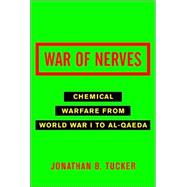
| Acknowledgments | vii | ||
| List of Illustrations | ix | ||
| Prologue: Live-Agent Training | 3 | (6) | |
| CHAPTER ONE: The Chemistry of War | 9 | (15) | |
| CHAPTER TWO: IG Farben | 24 | (18) | |
| CHAPTER THREE: Perverted Science | 42 | (22) | |
| CHAPTER FOUR: Twilight of the Gods | 64 | (19) | |
| CHAPTER FIVE: Fight for the Spoils | 83 | (20) | |
| CHAPTER SIX: Research and Development | 103 | (19) | |
| CHAPTER SEVEN: Building the Stockpile | 122 | (21) | |
| CHAPTER EIGHT: Chemical Arms Race | 143 | (15) | |
| CHAPTER NINE: Agent Venomous | 158 | (32) | |
| CHAPTER TEN: Yemen and After | 190 | (13) | |
| CHAPTER ELEVEN: Incident at Skull Valley | 203 | (20) | |
| CHAPTER TWELVE: New Fears | 223 | (22) | |
| CHAPTER THIRTEEN: Binary Debate | 245 | (22) | |
| CHAPTER FOURTEEN: Silent Spread | 267 | (22) | |
| CHAPTER FIFTEEN: Peace and War | 289 | (26) | |
| CHAPTER SIXTEEN: Whistle-Blower | 315 | (18) | |
| CHAPTER SEVENTEEN: The Tokyo Subway | 333 | (18) | |
| CHAPTER EIGHTEEN: The Emerging Threat | 351 | (24) | |
| Epilogue: Toward Abolition | 375 | (12) | |
| Glossary | 387 | (4) | |
| Notes | 391 | (60) | |
| Bibliography | 451 | (6) | |
| Index | 457 |
The New copy of this book will include any supplemental materials advertised. Please check the title of the book to determine if it should include any access cards, study guides, lab manuals, CDs, etc.
The Used, Rental and eBook copies of this book are not guaranteed to include any supplemental materials. Typically, only the book itself is included. This is true even if the title states it includes any access cards, study guides, lab manuals, CDs, etc.
Excerpted from War of Nerves: Chemical Warfare from World War I to Al-Qaeda by Jonathan B. Tucker
All rights reserved by the original copyright owners. Excerpts are provided for display purposes only and may not be reproduced, reprinted or distributed without the written permission of the publisher.